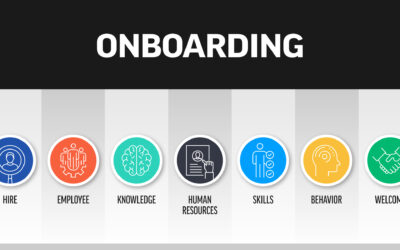Brady Kelley is the executive director of the Wholesale & Specialty Insurance Association, a member service organization representing the entire wholesale, specialty and E&S industry.
Dan Maher is the executive director of Excess Line Association of New York, an industry advisory association that is charged with the duty to facilitate and encourage compliance with the E&S law.
PIA Magazine asked them a few questions about the current state of the wholesale market nationally and at the state level. This interview, along with a wide range of articles on the E&S marketplace, can be found in the May 2022 issue of PIA Magazine.
So much is going on in the world right now. How does what’s happening globally affect the E&S marketplace in the U.S.?
Kelley: The market is growing. The 15 state stamping offices report increases in demand in D&O, professional, excess liability, property, residential flood, wildfire and cyber coverages. Greater frequency and severity of weather-related events, social inflation, Nuclear Verdicts® and global cyberincidents are likely factors. Economic growth also is a component of its overall growth.
It’s also important to remember that the E&S segment is designed for innovation, so in a time of rapidly developing technologies and emerging risks, the industry naturally excels. Exposures like cyber aren’t new, but their impact is evolving and expanding, and insureds need customized coverages that this industry can deliver.
Maher: Neither risk nor emerging risk exposures are static, whether in the United States or internationally. In recent times exposure to traditional risks, CAT events, cyber-attacks, marine war insurance and the pandemic have all impacted the E&S market. The invasion of Ukraine may exacerbate these exposures or present new ones. Fresh exposures, such as insurance of virtual currencies, are materializing in the excess line market and ELANY plays an important role in this evolution.
Is there anything about the New York excess line market that makes it unique from other states in the Northeast? If so, what is it?
Maher: New York is stringent from a regulatory standpoint. While careful regulation is important, it needs to keep up with the times and recognize that certain requirements impede legitimate insurance transactions while providing no consumer benefits. From a market perspective, New York City’s unmatched density of high-rise structures, coupled with New York State Labor Law 240—which often is referred to as the Scaffold Law and imposes strict liability for gravity-related falls—creates a unique and vital need for excess line insurance.
ELANY’s new study conducted by an independent consultant, If You Build It: The Role of Excess & Surplus Lines Coverage in New York State’s Construction Insurance Market, analyzes New York’s construction liability insurance market. It demonstrates the role excess line insurers and brokers play in procuring coverage for construction risks that admitted carriers will not write.
Does the WSIA have any initiatives that it is working on to strengthen the marketplace?
Kelley: WSIA’s mission is to help members across the entirety of the surplus-lines industry build profitable business relationships and strengthen the industry with networking, education, talent recruitment, regulatory/legislative advocacy and promotion of the value of the wholesale distribution system. Diversity, equity and inclusion initiatives also are a priority focus and related to every element of our programs, events and services to members.
The WSIA Diversity Foundation was formed in 2020, through support of member firms, to influence a more diverse, equitable and inclusive workplace and industry. In addition to several student-focused initiatives with this in mind, we also are very focused on providing member-focused resources, tools and education to help WSIA member firms influence meaningful change for their own workplaces and the industry. We believe that a more diverse and inclusive workplace will yield many benefits for the industry and our teams.
How has the E&S marketplace evolved in the last decade?
Kelley: During the last decade, the E&S market has grown exponentially. AM Best’s 2021 Special Report,
U.S. Surplus Lines–Segment Review found that the market reached a record $66.1 billion of E&S premium in 2020. That was a 17.5% increase over 2019 and ranks as the third largest growth since 2001-03. Domestic company growth was reported at 20.2%, which also is the largest since 2003, and E&S carriers maintain a higher proportion of secure financial ratings than the overall property/casualty market.
In 2010, surplus-lines premium was 6.8% of total p/c premium, and in 2020, it was estimated at 9.1%. On the commercial side, surplus-lines premium was 13.7% of commercial lines premium in 2010 and it grew to 18.4% in 2020, so growth as a percentage of the overall market also is noteworthy.
The AM Best report also notes one unique financial impairment in the surplus-lines segment from 2010 to 2020, in contrast to 163 admitted property/casualty company impairments.
Maher: The excess line market is driven by the need for specialized and often innovative products. For example, cyber liability insurance has grown from $40.8 million of premium in 2016 to $192.8 million in 2021. The transaction count for those risks grew by more than threefold in that time.
The needs of New York insureds drive excess line transactions both for emerging risks and traditional hard-to-place classes such as construction liability. With continued rapid technological advancements and geopolitical developments, the excess line market will likely play an even more crucial role in the future.
What does a wholesaler consider when looking to partner with a broker?
Maher: Wholesalers want to partner with retail brokers that seek a symbiotic, mutually beneficial relationship. If the relationship is hampered by blocked markets, shotgun submissions or other actions that limit the likelihood of a successful rate of bound quotes, it may be short lived.
What is the key to a successful retail broker/wholesaler relationship?
Maher: Wholesalers view retail brokers as clients. Meeting the needs of retail brokers through product expertise and knowledge of an insurer’s market appetite is critical. Retailers should seek best-in-class wholesalers to match their needs and develop strong, consistent relationships with them.
When a wholesaler and a retail broker work together, how does an insured benefit?
Kelley: Wholesale brokers are technical specialists who work in a unique segment of the insurance industry, and they provide retail agents, and their clients, access to expertly tailored, customized solutions.
Insureds benefit because wholesale brokers provide expertise and access to markets, coverages and options that might not be available in the standard market.
In late 2021, WSIA partnered with Conning Inc. to update an analysis of data from 2016-20, which confirmed that wholesale distribution does not increase the cost of the transaction to the insured. That analysis determined that the cost of wholesale distribution was lower than retail distribution by 1.8 percentage points, which makes consulting a wholesale expert a common-sense approach for insurance buyers, particularly in emerging risks. There is never a cost to seek a wholesale quote, but there is high value when buyers need an expertly crafted solution from the wholesale market.
Maher: The insured gains access to coverage that is unavailable from the retail broker alone. The wholesaler brings expertise on the type of coverage being sought by the insured, permitting a more fulsome consideration of how to best address the insured’s needs.
To enhance the speed and efficiency of placing coverage through excess line wholesalers, ELANY is advocating for two bills in Albany. The first would eliminate the diligent-effort requirement for commercial lines E&S risks placed through a wholesaler that is unaffiliated with the retail broker (S.8128/A.9117), and the second would simplify excess line affidavits by eliminating unnecessary and time-consuming data reporting elements (S.8127/A.9088). These bills would help insureds gain coverage in a more streamlined fashion.
This article originally appeared in the May 2022 issue of PIA Magazine.
Jaye Czupryna is publications manager for PIA Northeast and editor-in-chief of PIA Magazine. She started her career in public relations, and she has been with PIA for more than 20 years. She has overseen PIA Northeast’s various publications, including the award-winning magazine since 2009. Jaye graduated cum laude from Siena College where she earned her Bachelor of Arts Degree in English Communications.







